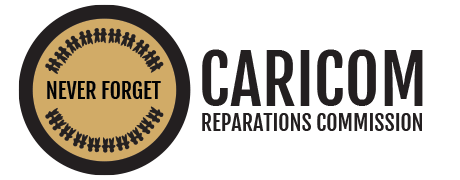Since being robbed from our homeland, Africans and their descendants have waged unrelenting efforts for redress. These efforts have taken many forms. Some aimed at self-repair (now called internal reparations); others sought redress from those who committed the crimes.
The first acts of reparations sought to restore our liberty and sovereignty. Individual flight from enslavers, waging spontaneous rebellions, and establishing autonomous (“outlying“ and “maroon”) communities were some of these initial 17th-century restorative actions.
During the 18th century, running away and rebellions for self-rule were constant. For over 100 years, enslaved Africans escaped to Spanish controlled Florida creating the Seminoles as they merged with the indigenous. The 1712 and 1741 New York Conspiracies, and the 1739 Stono Rebellion (SC), all had goals of freedom along with independence. Also, the 18th century saw the first legal petitions for redress. Paul and John Cuffe petitioned for reparations and repatriation – a return to Africa, while Belinda Royall successfully petitioned a pension from the Royall estate.
Large scale armed rebellion would become the tone and tenor of the 19th century. Inspired by the Haitian Revolution, Blacks became more emboldened to secure their natural right to be free and self-governing. In 1800 Gabriel Prosser organized 5,000 men in revolt to establish a free Black state in Virginia. In 1822 Denmark Vesey organized a 9,000-member rebellion. The 1831 Nat Turner revolt both signified the impending death of enslavement, and our “by any means necessary” demand to be restored to free men and women with the full dignity of human beings. During this period, David Walker’s Appeal To the Colored Citizens of the World (1829) and Martin Delaney’s The Condition, Elevation, Emigration, and Destiny of Colored People of the United States (1852), were textual articulations of what we meant by repair and restoration.
The US Civil War saw 200,000 enlisted men, 40,000 women and 20,000 children of African descent join in support of Union forces to continue our freedom goals – owning our own labor, separately governing ourselves, and determining our collective future. Near the end of the War, the 40 acres and a mule issued by Special Field Order 15 had seemed to be the culmination of over two centuries of rebellion to accomplish those three goals. The Field Order established an autonomous region for Black people.
However, it was nullified along with other important but short-lived federal responses to the crimes of enslavement. The 13th, 14th, and 15th Amendments, the Freedmen’s Bureau, and the 1870’s civil rights laws all became toothless with the institution of Black Codes, the terrorism of the Ku Klux Klan, and the entrenchment of a national system of apartheid (separate development), called Jim Crow segregation.
The century ended with the first grassroots organizing effort for reparations led by Callie House and Isaiah Dickerson. The Ex-Slave Mutual Pension and Bounty Association gathered 600,000 signatures in a petition for pensions for the formerly enslaved.
The 20th century saw organizational support for redress and the creation of several organizations aimed to fight for reparations. The Universal Negro Improvement Association (UNIA, 1914) renewed and elevated the call for self-determination and repatriation. Queen Mother Audley Moore reawakened in earnest the demand for reparations as she delivered a reparations petition with one million signatures to President Kennedy (1963). The Nation of Islam, in “What the Muslim Wants” (1960), the Black Panther Party’s 10 Point Program (1966), and the Republic of New Afrika (1968) all had stated demands for federal reparations. Additionally, on behalf of the National Black Economic Development Conference, James Forman, (1969) issued the Black Manifesto, demanding $500 million from the religious community.
The 1980s saw many other Black organizations take on the goal of reparations. The December 12th Movement (D-12); the Uhuru Movement; the National Black United Front (NBUF); the African People’s Socialist Party and its African National Reparations Organization; the New Afrikan Peoples Organization, and National Council of Black Lawyers were some.
These efforts highlighted the need for a united coalition devoted solely to reparations. In 1987, the National Coalition of Blacks for Reparations in America (N’COBRA) was born to build on this earlier legacy. It quickly became the premier grassroots reparations organization in the country. Two years later, one of its members, Reparations Ray Jenkins, convinced his congressman, John Conyers, to introduce HR 3745 – The Commission to Study Reparation Proposals for African Americans Act, later becoming HR 40. Understanding that a reparations demand should satisfy Blacks choice to fully integrate in America, separate to an independent region(s), or repatriate to Africa, N’COBRA still fights for the rights of all three.
The 21st century, ushered in a new paradigm of reparations activism. Success at the 2001 World Conference Against Racism – WCAR, led by the D-12 and NBUF with N’COBRA support, set the movement on a new path. The Trans-Atlantic Slave Trade, slavery, apartheid and colonialism were declared crimes against humanity, which nations are obligated to engage in reparative initiatives to correct. This has become the foundation of all current global reparations work.
Simultaneously with WCAR, many states and municipalities enacted legislation requiring corporations to disclose their enslavement past in order to do business in their jurisdictions. Several reparations lawsuits were also filed during this time. (Although unsuccessful, we believe that in incorporating the findings from WCAR and new science around transgenic epigenetic inheritance, a current lawsuit will have a different outcome.)
Many scholarly texts and articles were penned. Randall Robinson’s The Debt Ray Wimbush’s Should America Pay, and Ta Nehisi Coates’ The Case for Reparations have impacted the movement significantly.
With inspiration from the Caribbean-Community of States (CARICOM) Reparations Commission – CRC, the National African American Reparations Commission (NAARC) was convened in 2015 by Dr. Ron Daniels of the Institute of the Black World 21st Century. NAARC, aided by N’COBRA, initiated two cardinal contributions to the movement – revising HR 40 from a study bill to a remedy bill -the Commission to Study and Develop Reparations Proposals for African Americans Act – and the production of a comprehensive 10 Point Reparations Program.
Today, the reparations demand is solidly in the mainstream. HR 40’s new lead sponsor, Rep. Sheila Jackson-Lee, has pushed early for a congressional hearing. It has 170+ co-sponsors and a Senate companion bill – S 1083. Injecting reparations early in the presidential election and the post-George Floyd rebellions were also impactful contributions.
Now, with local reparations actions beginning in Evanston, IL, Chicago, IL, Asheville, NC, and further with the state of California, no longer is there a thought of if there will be reparations but when and what forms reparations will take.
It is extremely important as we come out of the 2020 elections that we intensify our efforts nation-wide. More co-sponsors are needed. More local reparations ordinances must be enacted. More community stakeholder structures must be created. A clearer understanding of “full repair” – the intended and needed outcomes of reparations must occur. And a united reparations front must be forged and honored within the movement.
Finally, the demand for a Reparations Executive Order of President-elect Joe Biden is very appropriate. Having understood the importance of the Black vote in his win and having declared that passing HR 40 as the “first-step” in ending racial inequality, this could be a litmus test as to whether or not he actually “has our back.”
Clasping victory for repair, healing, and restoration is here before us. Implementing the above actions are key. This generation can and must seize the time![1]




